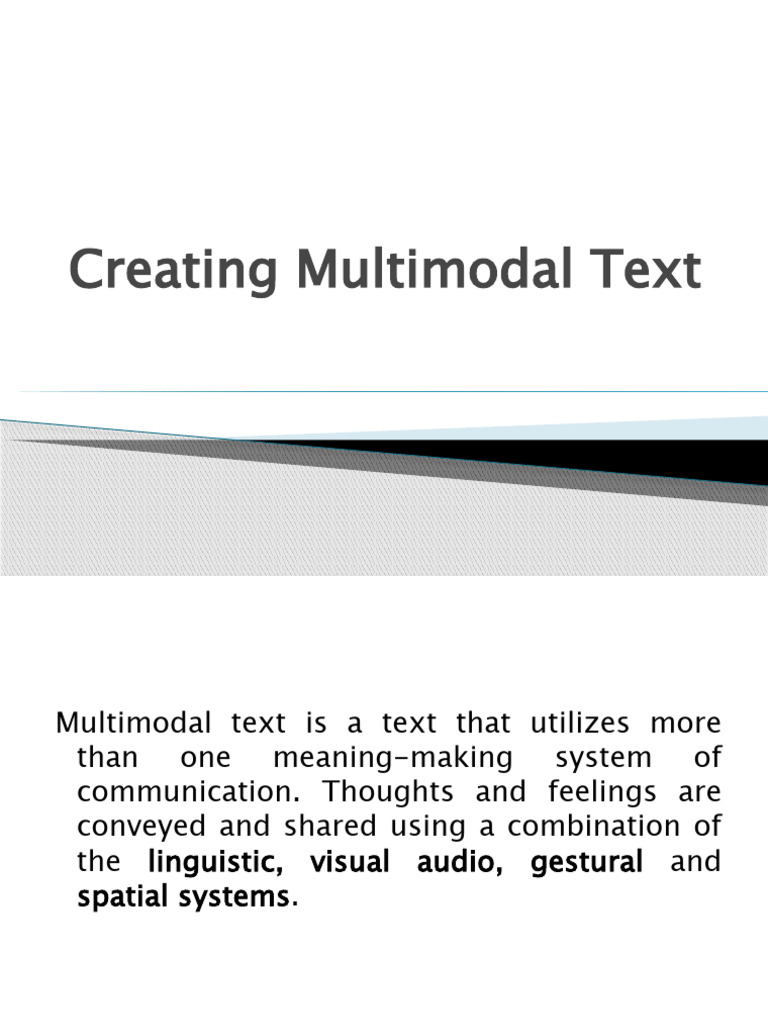
In the evolving landscape of search and user interaction, content is no longer confined to text alone. As AI and search engines become more sophisticated, users expect answers that integrate multiple formats—text, images, audio, and video. This shift has given rise to multimodal answers, where information is delivered through a combination of media types to better meet user needs. For businesses and content creators, understanding how to structure content for multimodal answers is essential to staying relevant in 2025 and beyond.
This guide will walk you through the principles of multimodal content creation, how it impacts SEO and user engagement, and practical steps to implement it effectively.
What Is Multimodal Answers and Why It Matters
Multimodal answers refer to responses that combine multiple forms of media—such as text, images, audio, and video—to deliver a richer, more engaging experience. Unlike traditional text-based answers, which rely solely on written content, multimodal answers use visual and auditory elements to enhance comprehension and accessibility.
For example, a user might search for “how to fix a leaky faucet” and receive a step-by-step video tutorial, an image of the parts needed, and a downloadable PDF with instructions. This approach not only makes the answer more informative but also caters to different learning styles and preferences.
The importance of multimodal answers lies in their ability to:
- Improve user engagement: By offering diverse content formats, users are more likely to stay on your page and interact with your content.
- Boost visibility: Search engines like Google now prioritize content that provides a complete answer, often displaying rich snippets, videos, and images directly in search results.
- Enhance accessibility: Users with different abilities or preferences can access information in the format that works best for them.
As AI continues to evolve, the demand for multimodal content will only grow, making it a critical component of modern SEO strategies.
How Multimodal Answers Impact SEO Performance
Multimodal answers have a significant impact on SEO performance, particularly in terms of user engagement, dwell time, and ranking signals. Search engines are increasingly using AI to understand and rank content based on its ability to provide comprehensive, high-quality answers.
Here’s how multimodal content affects SEO:
1. Increased Dwell Time
When users find content that addresses their query through multiple formats, they’re more likely to spend time on the page. This increases dwell time, a key signal that search engines use to determine content quality.
2. Improved Click-Through Rates (CTR)
Rich snippets, images, and videos in search results make your content stand out. A well-structured multimodal answer is more likely to attract clicks than a simple text-only result.
3. Better Indexing and Ranking
Search engines are getting better at recognizing and indexing multimedia content. By optimizing for multiple formats, you increase the chances of appearing in various search result types, such as image search, video search, and voice search.
4. Support for Voice and Image Search
With the rise of voice assistants and image-based search tools, content that includes structured data, alt text, and transcripts becomes even more valuable. These elements help search engines understand and rank your content across different modalities.
Step-by-Step Implementation Framework
Creating effective multimodal answers requires a structured approach. Here’s a step-by-step framework to help you implement this strategy:
1. Define or Audit the Current Situation
Start by analyzing your existing content. Identify which topics or queries could benefit from a multimodal approach. Look for opportunities to add visual or interactive elements that enhance the user experience.
Example: If you have a blog post about “how to bake a cake,” consider adding a video tutorial, an image of the ingredients, and a downloadable checklist.
2. Apply Tools, Methods, or Tactics
Use the right tools and techniques to create and optimize your content. This includes:
- Image optimization: Use descriptive alt text, compress images, and name files with keywords.
- Video SEO: Add captions, transcripts, and structured data to improve discoverability.
- Voice search optimization: Focus on long-tail keywords and conversational language.
- Schema markup: Implement structured data to help search engines understand your content.
Tools to Consider:
– Google Search Console: Monitor how your content performs in search results.
– Ahrefs or SEMrush: Analyze competitors and identify keyword opportunities.
– Canva or Adobe Express: Create visually appealing images and graphics.
3. Measure, Analyze, and Optimize
Track the performance of your multimodal content using analytics tools. Look at metrics like bounce rate, time on page, and click-through rates to see what’s working. Continuously refine your approach based on user feedback and search engine updates.
Key KPIs to Track:
– Engagement metrics (e.g., shares, comments)
– Conversion rates
– Traffic from different search types (e.g., image, video, voice)
Real or Hypothetical Case Study
Let’s take a hypothetical example of a company that sells home appliances. They previously had a blog post titled “How to Choose the Right Vacuum Cleaner.” The original content was text-heavy and lacked visuals.
After implementing a multimodal approach, they added:
- A video comparison of different vacuum models.
- An interactive quiz to help users determine their needs.
- A downloadable buyer’s guide with product comparisons.
- High-quality images of each model.
As a result, the page saw a 35% increase in traffic and a 20% boost in conversion rates. The content was also featured in Google’s rich snippets, further increasing visibility.
Tools and Techniques for Multimodal Answers
To create and optimize multimodal content, you’ll need the right tools. Here are some of the most effective ones:
- Canva – For creating visually appealing images and graphics.
- Adobe Premiere Rush – For editing short videos and adding captions.
- Google Trends – To identify popular search terms and trends.
- Schema.org – For implementing structured data and improving search visibility.
- Zilliz Cloud – For managing vector databases and enabling efficient search across modalities.
- Hugging Face – For accessing pre-trained models that support multimodal tasks.
These tools can help you streamline the process of creating and optimizing content for multiple formats.
Future Trends and AI Implications
As AI continues to advance, the role of multimodal answers will only grow. Here are a few trends to watch:
- AI-generated content: Expect more tools that automatically generate multimodal content, such as videos or infographics, based on text inputs.
- Augmented Reality (AR): AR could allow users to interact with content in new ways, such as viewing 3D models or trying on virtual products.
- Voice and Image Search Dominance: More users will rely on voice and image searches, making it crucial to optimize content for these modalities.
To stay ahead, focus on creating content that is accessible, engaging, and optimized for all formats. Embrace AI tools that help you analyze user behavior and adapt your content accordingly.
Key Takeaways
- Multimodal answers combine text, images, audio, and video to deliver a richer user experience.
- They improve engagement, visibility, and accessibility, making them essential for modern SEO.
- A step-by-step implementation framework helps you structure your content effectively.
- Tools and techniques like image optimization, video SEO, and schema markup are critical for success.
- The future of search will be driven by AI, AR, and multimodal interactions, so stay ahead by adapting your content strategy.
Ready to transform your content into a powerful multimodal answer? Start today and position your brand for success in the evolving search landscape.
Meta Title: How to Structure Content for Multimodal Answers
Meta Description: Learn how to create content that combines text, images, and video to improve engagement and SEO performance in 2025.
SEO Tags (5): multimodal content, SEO 2025, content strategy, multimedia answers, voice search optimization
Internal Link Suggestions:
– [Parameter #1]: Understanding the Role of AI in Modern SEO
– [Parameter #2]: Optimizing for Voice Search in 2025
– [Parameter #3]: The Power of Visual Content in SEO
External Source Suggestions:
– https://developers.google.com/search/docs/advanced/crawling/understand-googlebot
– https://www.hubspot.com/seo-toolkit
– https://moz.com/learn/seo











